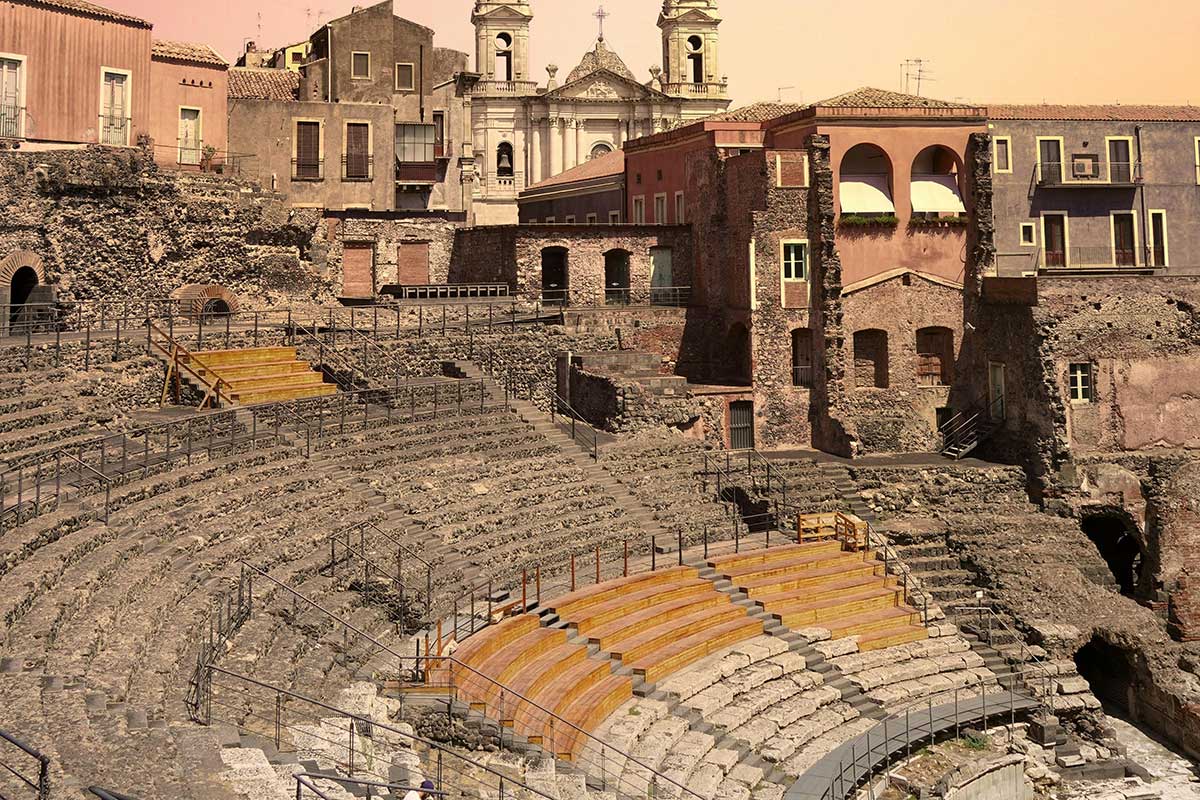History of Catania
A thousand-year history
The origins of the city of Catania date back to the ancient Greek colony of Calcidesi di Naxos. The Calcidesi settled on the slopes of Etna in 729 B.C., and the first settlements were born in the place where today is the Benedictine monastery. Here the acropolis developed until 476 BC, when it was conquered by the tyrant of Syracuse, Gerone, who after confining its inhabitants to Lentini, imposed the name “Etna” on the city. But the reaction of the Calcidesi was immediate: in 461 a.C. reconquered and rebuilt the place to which they returned the name of “Catania or Catina” – the name, according to Plutarco, means “grater”, indicating the lava nature of the land on which the city stands. From this moment on Catania suffered eight other destructions, mostly of natural origin: eruptions and earthquakes.


